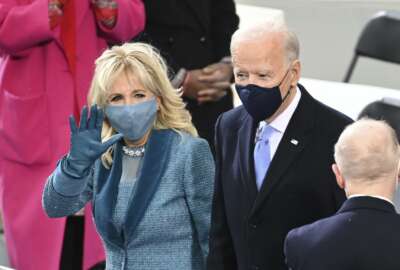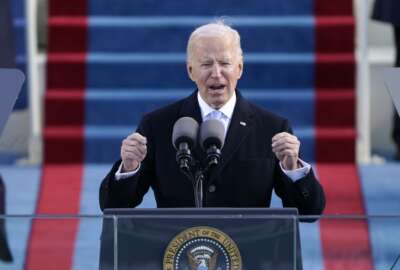
Meet the new boss, (not so) same as the old boss
Already there are quite a few noticeable differences between the Biden and Trump administrations. Biden's mask mandate for federal employees and contractors - and...
If you’re still reporting to a federal office building, maybe you’ve noticed the blank spaces on the walls where the old photos used to be.
There are probably some new people (or maybe not so new!) walking around. Have any new faces joined your agency’s Zoom calls yet?
For me, there’s more reading to do; the executive orders (and the fact sheets describing the EOs) are longer.
Yup, there’s a different administration in town, and President Joe Biden and his team have spent the last few days pumping out new executive orders.
Many of them overturned Trump-era orders. Many others tasked agencies with reviewing a boatload of paperwork from the last four years. Still others ask agencies to take on brand new things, like recommendations for modernizing the federal regulatory process, or the creation of a new COVID-19 response coordinator.
The differences between the old and the new are striking, and I say that not as an assessment that one is better or worse than the other.
Things are just … different.
Take the new mask mandate, which Biden signed on his first day in office.
Yes, many of your agencies probably mandated mask-wearing since the earliest days of the pandemic, and maybe, if you spent any time at the office since March, you complied.
But before last week, there wasn’t a governmentwide mask mandate that applied to every person who works in (or enters) an executive branch building. Now there is.
The Biden administration has described the federal mask mandate as something that could set an example for the rest of the country. We’ll see.
But the mask mandate wasn’t all.
The executive order also directed the Department of Health and Human Services to develop a COVID-19 testing plan for the federal workforce.
Again, individual agencies may have already been testing their frontline employees. But from everything we heard, the efforts were sporadic and varied. The American Federation of Government Employees has been especially vocal about COVID testing at the Department of Veterans Affairs. Union leaders said employees at VA’s medical facilities could get a test if they wanted one but often went back to work while they waited for the results. The protocols often varied depending on the facility.
Then there’s the new federal workforce safety task force. This didn’t exist before last week, although agencies have said they’ve met and discussed the pandemic and its impact on the federal workforce over the last 10 months.
For one thing, it’s led by the Office of Personnel Management, which had largely taken a backseat in pandemic planning for the federal workforce during the last year, as well as the General Services Administration and the new COVID-19 response coordinator.
The agenda for the task force is long. Here are the topics the group will work on:
- Testing methodologies and protocols.
- Case investigation and contact tracing.
- Physical distancing requirements and limitations, including “recommended occupancy and density standards.”
- Equipment needs, including personal protective equipment.
- Air filtration.
- Enhanced environmental disinfection and cleaning.
- Safe commuting and telework options.
- IT infrastructure to support telework.
- Vaccine prioritization, distribution and administration.
- Approaches for coordinating with state, local, Tribal, and territorial health officials, plus business, union, academic and other community leaders.
- Any management infrastructure needed by agencies to implement public health guidance.
- Possible exemptions to CDC guidelines, “such as for mission-critical purposes.”
The Trump administration released guidance to agencies last April, describing the broad steps they should take to gradually reopen their offices to federal employees and contractors through multiple phases. The guidance set broad reopening parameters, leaving it up to individual agencies to work out the details and make their own plans.
This approach makes a certain amount of sense with a workforce that’s as geographically dispersed as the federal government, but some lawmakers and employee groups wanted more out of the Office of Management and Budget — or OPM, or someone.
Our own surveys of Federal News Network readers showed a real mixed bag of agency reopening strategies and accommodations.
This new task force isn’t going to rush out vaccines to the entire federal workforce in the next few months. Frontline federal workers may still, unfortunately, catch COVID at work. The group isn’t going to solve the pandemic.
But it’s certainly a different approach, and like it or not, it signals the new administration’s intent to centralize the government’s handling of the pandemic and its impact on the federal workforce.
And in case you missed it, check out this message Biden left recently for career feds. You can watch the video here.
Nearly Useless Factoid
By Alazar Moges
Although popularly know for video games, Nintendo started as a card company on September 23, 1889. Fusajiro Yamauchi began the company selling hand-painted playing cards, which eventually became the most popular brand in Japan.
Source: Business Insider
Copyright © 2025 Federal News Network. All rights reserved. This website is not intended for users located within the European Economic Area.
Nicole Ogrysko is a reporter for Federal News Network focusing on the federal workforce and federal pay and benefits.
Follow @nogryskoWFED
Related Stories






